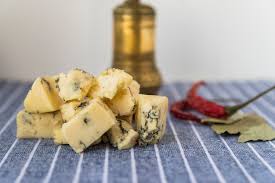Cheese has long held a cherished place in global cuisine, evolving from a simple preservation method to an artisanal craft celebrated worldwide. Among the myriad varieties available, grouse cheese is emerging as a unique delicacy that combines rich flavors, culinary heritage, and modern gourmet innovation. Whether you are a cheese connoisseur or a curious foodie, grouse cheese offers a distinctive taste experience worth exploring. In this article, we delve deep into what grouse cheese is, its origins, how it is made, and why it deserves a spot on your cheese board.
What is Grouse Cheese?
At its core, grouse cheese is a specialty cheese infused or paired with grouse, a game bird known for its tender and flavorful meat. While not as mainstream as cheddar or brie, grouse cheese represents a bold fusion of meat and dairy, appealing to those who enjoy rich, complex flavors. The idea is to capture the earthy, gamey essence of grouse and integrate it into a creamy, melt-in-your-mouth cheese.
Depending on the producer, grouse cheese may come in various forms:
- Infused cheese: Cheese that incorporates grouse meat or extracts into the curds before aging.
- Layered cheese: Cheese layered with small pieces of smoked or cooked grouse for texture and flavor contrast.
- Flavored cheese spreads: Soft cheeses blended with seasoned grouse for an easy-to-use gourmet spread.
This versatility makes grouse cheese suitable for multiple culinary applications, from charcuterie boards to gourmet sandwiches and fine dining recipes.
The Origins of Grouse Cheese
Grouse cheese is not rooted in ancient traditions like Parmigiano-Reggiano or Roquefort. Instead, it is a modern innovation inspired by the growing interest in game meats and artisanal cheese-making. Its development is often associated with regions where grouse hunting is common, including parts of Europe and North America.
Historically, game meats like grouse were prized for their rich flavors and were often consumed during festive seasons or as luxury items. Cheese, on the other hand, evolved as a staple preservation method, turning milk into a long-lasting food product. The combination of the two—cheese and grouse—emerged as a gourmet concept in recent decades, driven by chefs and artisanal producers seeking unique flavor profiles.
How Grouse Cheese is Made
Creating grouse cheese is an intricate process that requires both culinary skill and careful attention to safety standards. Here’s a step-by-step overview of how artisanal producers typically craft this specialty cheese:
- Selecting Ingredients: High-quality milk (cow, goat, or sheep) forms the base, while grouse meat is carefully sourced, often from free-range or wild game. The quality of both ingredients is crucial for flavor and texture.
- Preparing the Grouse: The meat is usually cooked or smoked to enhance its flavor. Some producers use purees or finely minced meat to mix evenly into the cheese curds.
- Cheese Production: The milk is warmed and coagulated using rennet, forming curds. During this stage, the prepared grouse is incorporated, ensuring that its flavors meld with the creamy base.
- Pressing and Aging: The curds are pressed to remove excess whey and shape the cheese. Aging can range from a few weeks to several months, depending on the desired texture and flavor intensity.
- Flavor Development: Over time, the cheese develops a unique balance between the creamy, tangy notes of the dairy and the savory, earthy tones of grouse.
Some gourmet versions may also include additional flavorings, such as herbs, spices, or smoked paprika, to complement the gamey taste.
Flavor Profile and Culinary Uses
The flavor of grouse cheese is both bold and nuanced. You can expect:
- Earthy and Gamey Undertones: A subtle richness reminiscent of the forest and the natural diet of grouse.
- Creamy and Smooth Texture: Balances the meatiness, making it enjoyable as a table cheese or melting cheese.
- Savory Complexity: Often enhanced by smoked or spiced variations, perfect for pairing with robust wines.
Culinary Applications
Grouse cheese is incredibly versatile:
- Cheese Boards: Pair it with crusty bread, olives, nuts, and dried fruits for a gourmet platter.
- Gourmet Sandwiches: Add slices to toasted sourdough or baguettes for an elevated lunch option.
- Cooking and Baking: Melted grouse cheese can enrich pasta dishes, risottos, or casseroles.
- Wine Pairings: Complements full-bodied red wines like Cabernet Sauvignon or earthy whites like Chardonnay.
Its bold flavor pairs well with other game meats, charcuterie, or even sweet accompaniments like figs and honey.
Health Considerations
While grouse cheese is a gourmet treat, it is essential to enjoy it in moderation:
- High in Protein and Calcium: Like most cheeses, it provides essential nutrients.
- Rich in Fat: Cheese, combined with game meat, can be calorie-dense, so portion control is key.
- Game Meat Considerations: Proper sourcing and preparation ensure safety, as wild game can sometimes carry bacteria or parasites.
For those with dietary restrictions, soft versions of grouse cheese may be avoided due to higher moisture content and potential bacterial growth.
Where to Find Grouse Cheese
Since grouse cheese is still a niche product, availability may be limited. You can explore:
- Specialty Cheese Shops: Some high-end stores carry small-batch or seasonal varieties.
- Farmers’ Markets: Artisanal cheese makers may offer fresh batches during the hunting season.
- Online Retailers: Certain gourmet cheese websites ship small quantities, allowing enthusiasts to taste this rare delicacy.
- Restaurants: Fine dining establishments sometimes feature grouse cheese in their signature dishes.
Grouse Cheese vs. Traditional Game Meat Dishes
Unlike traditional game meat preparations, which focus solely on the protein, grouse cheese integrates the flavors into a dairy matrix. This not only extends shelf life but also offers culinary versatility. It’s a bridge between classic game dishes and modern cheese artistry, providing a unique experience for adventurous eaters.
Tips for Enjoying Grouse Cheese
- Room Temperature: Let the cheese sit out for 20-30 minutes before serving to enhance flavors.
- Pair Wisely: Combine with robust wines, crusty bread, or mild fruits to complement without overpowering.
- Experiment in Recipes: Use it sparingly in dishes to add depth without overwhelming other ingredients.
- Storage: Keep it wrapped in parchment or wax paper in the fridge, avoiding plastic, to maintain texture and prevent strong odor transfer.
The Future of Grouse Cheese
As culinary trends continue to embrace innovation and sustainability, grouse cheese is likely to gain more popularity. Its unique combination of game and dairy appeals to food enthusiasts seeking new tastes, and artisanal producers are experimenting with aging techniques, smoking, and blending with other flavors to create signature varieties.
Grouse cheese also aligns with the growing interest in nose-to-tail eating and utilizing sustainable ingredients, making it not only a gourmet delight but also a conscious culinary choice.
Conclusion
Grouse cheese stands out as a remarkable culinary innovation that bridges traditional game flavors with artisanal cheese-making. Its earthy undertones, creamy texture, and versatile applications make it a must-try for food lovers eager to explore new gourmet experiences. While still niche, its growing popularity hints at a future where cheese lovers and game enthusiasts alike can enjoy this unique delicacy on their tables.

